MAHASWETA DEVI (JANUARY 14, 1926 -?JULY 28, 2016), WRITER AND SOCIAL ACTIVIST
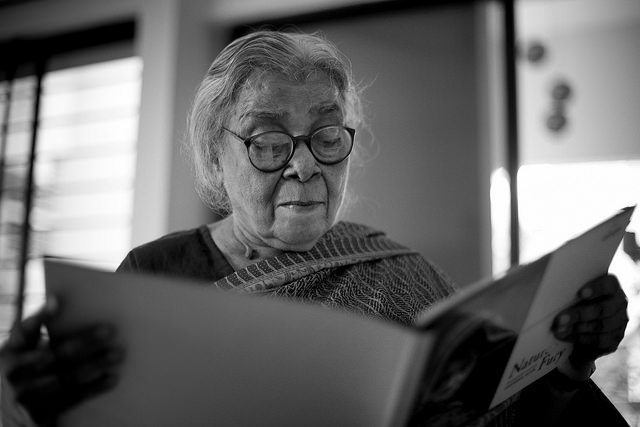
Protocol wasn?t Didi?s thing.?Shoitan! (Satan) she would say lovingly. And then grab you and plonk you on her lap. The fact that both Rahnuma and I were far too old, and I was certainly much too heavy, to be sitting on anyone?s lap wasn?t something she worried much about. She didn?t care much for people?s age, and what other people thought, was something that had never bothered her. If you love someone, they sit on your lap. ?You have a problem with that??
Mahasweta Devi (Didi ? elder sister ? to all of us) had been a giant of a figure in South Asian literature for as far back as I can remember.?Jhansir Rani?(The Queen of Jhansi, 1956), Hajar Churashir Maa (Mother of 1084, 1975) and?Aranyer Adhikar?(The Occupation of the Forest, 1977) her powerful novel about the Santal uprising were what we knew this celebrated writer and activist by. That she was a tease and loved to sing, and didn?t mind the odd practical joke, was a side to her that had remained private. What should have been apparent was the rebel in her; her uncompromising stand for the oppressed, and her clear position as to which side of the fence she belonged. Continue reading “Didi. The Street Fighter”
Tag: politics
Kalpana's Warriors opens in Delhi
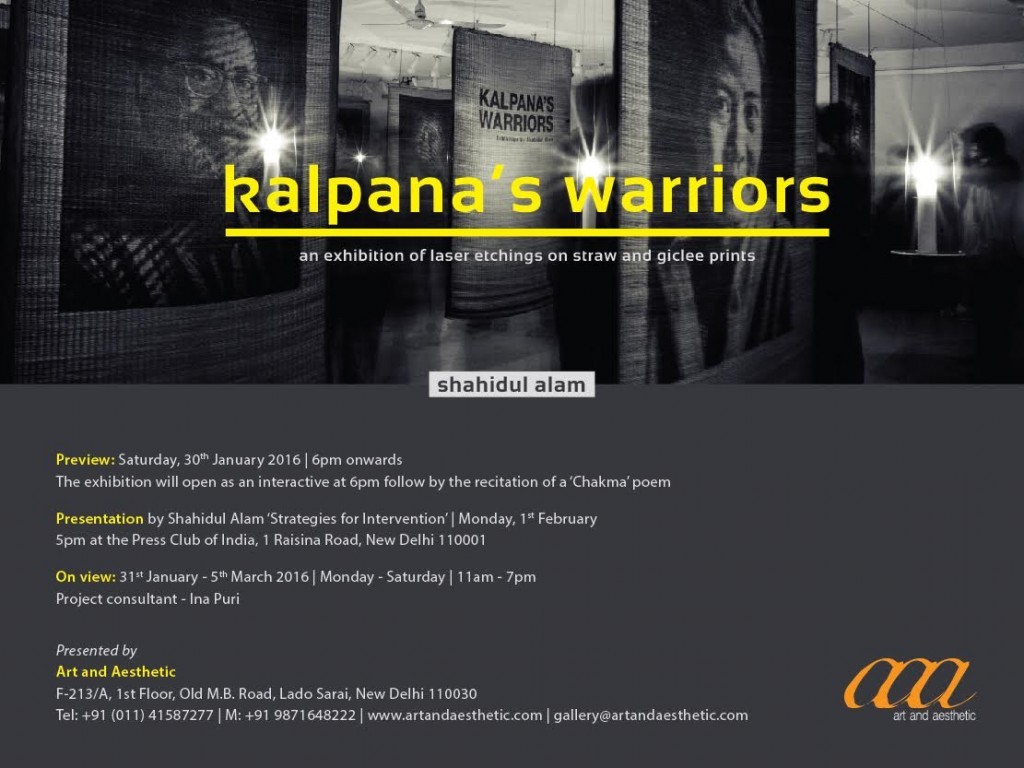
Kalpana Chakma, a young leader of the Bangladeshi Hill Women?s Federation, was abducted from her home by military personnel and civilian law enforcers at gunpoint on 12 June 1996. She remains missing. Through this work, part of Drik?s ?No More? campaign, photographer?Shahidul Alam?has tried to break a silence that successive governments, whether civilian or military backed, have carefully nurtured. The exhibition uses laser etching on straw mats, an innovative technique developed specifically for this exhibition. The process involved in creating these images is rooted to the everyday realities of the hill people, the paharis. Interviewees had repeatedly talked of the bareness of Kalpana?s home. That there was no furniture. That Kalpana slept on the floor on a straw mat. The straw mats were burned by a laser beam much as the fire that had engulfed the pahari villages.
Shilpakala Award recipient Shahidul Alam, set up Drik and Majority World agencies, Pathshala South Asian Media Institute and Chobi Mela festival. Honorary Fellow of the Royal Photography Society and visiting professor at Sunderland University. Alam has chaired the World Press Photo jury. Alam also introduced email to Bangladesh. His book my journey as a witness has been described as ?the most important book ever written by a photographer? by legendary picture editor of?Life Magazine, John Morris. He is an internationally acclaimed public speaker and has presented at Hollywood, National Geographic, re:publica, COP21 and POP Tech.
Reviews:
What’s Hot
Buzz in Town
Artslant
Blouinartinfo
Events High
The Statesman
HISTORY AS ETHICAL REMEMBRANCE
Dhaka University, Shaheed Minar and CP Gang’s ‘bessha’ banner
by Rahnuma Ahmed
![The online group CP Gang's banner reads (translated) 'Resist these so-called civil [society] liars and anti-Independence intellectual prostitutes in order to uphold the true history of the liberation war to the younger generation.' Those whose faces are crossed out are, from left to right, journalist Mahfuzullah, Dhaka University professors Asif Nazrul and Amena Mohsin, North South university professor Dilara Chowdhury, lawyer Tuhin Malik, writer and columnist Farhad Mazhar, Saptahik editor Golam Mortuza, New Age editor Nurul Kabir, and daily Manabzamin editor Motiur Rahman Chowdhury. A human chain at the Central Shaheed Minar organised by the Muktijoddha Sangsad Santan Command, Dhaka on October 17, 2014.](http://newagebd.net/wp-content/uploads/2015/11/0229.jpg)
THIS story begins with the sudden and unexpected death of professor Piash Karim on October 13, 2014, of cardiac arrest. Piash, who had returned to Dhaka in 2007 after teaching for nearly two decades at an American university, had joined BRAC University and was teaching in the department of economics and social sciences. Dr Amena Mohsin, professor of international relations at Dhaka University, and Piash Karim got married in March 2013; high-school student Drabir Karim, Piash’s son from his first marriage, was part of their family. Earlier known in his circle of friends for his left-leaning views, Piash gradually gravitated towards the Bangladesh Nationalist Party, a centrist party and the ruling Awami League’s arch-enemy. He began frequenting television talk shows, popular, as no real debate takes place in the parliament. (The popularity of TV talk shows has drastically declined, however, with the silent black-listing of dissident voices; a couple of analysts have reportedly left the country). His comment that the Ganajagaran Mancha, initially composed of a small group of bloggers and activists calling for the hanging of war criminals of 1971, later mushrooming into a sea of people at Shahbagh square in Dhaka city and spreading nationwide, was developing ‘fascist’ undertones, earned him widespread denunciation. The movement was then riding high. Continue reading “HISTORY AS ETHICAL REMEMBRANCE”
Moving opening ceremony of "Kalpana's Warriors"
Remarkable: Noam Chomsky
Absolutely stunning: Jess Worth. New Internationalist Magazine (Oxford)
We had a fabulous opening with moving recitation of Kabita Chakma’s poem “I will defy” by Aungmakhai Chak, Marium Rupa and Rahnuma Ahmed. Many of the warriors were present in person. We were sad to miss Saydia Gulrukh, but her presence was felt.
I will resist, I shall defy
Will you do as you please?
You turned my home into sand
It was a forest where I stand
You made daylight go dark
Left it barren never a spark
I will resist. I shall defy
You strip me of my land
On my women, your hand
No longer shall I see
No longer will I be
Abandon, neglect, rage
A throbbing womb, my stage
I curl, I tear asunder
Awake, I search, I wander
I am who I am
And I will resist
I shall defy
Poem by Kabita Chakma
Translation by Shahidul Alam
Thanks to Arshad Jamal and Chris Riley for their support and Mohammad Mohsin Miah for helping with the printing. ASM Rezaur Rahman curated the show and the entire teams from Drik’s Publication, Gallery, Photography and Audio Visual Department as well as the volunteers from Pathshala did a wonderful job. We shall resist and we will continue to defy.
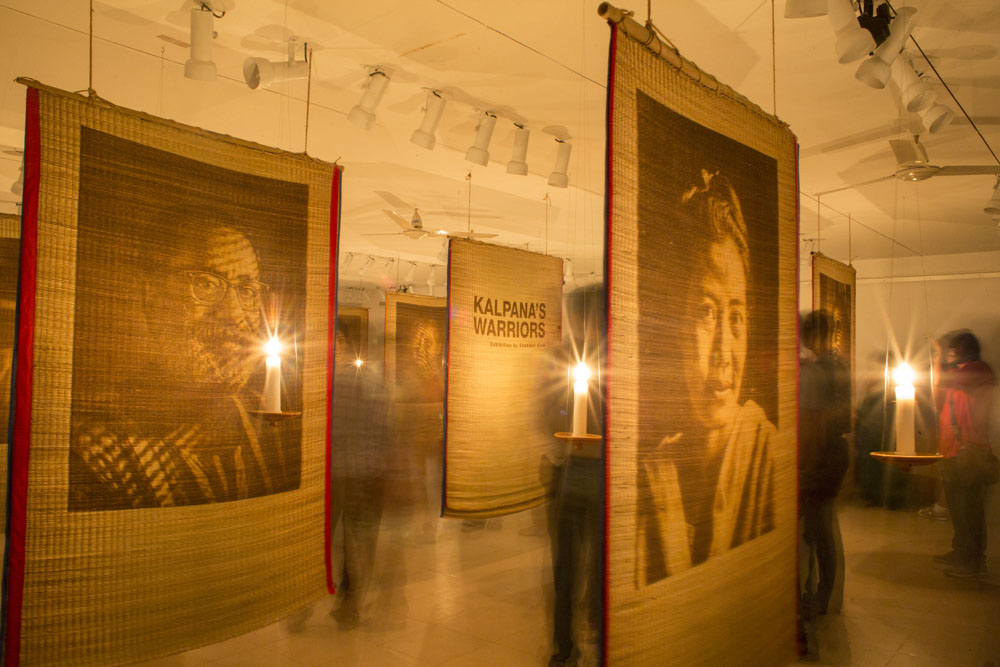
Opening of #kalpanaswarriors at #Drik gallery #dhaka #dhanmondi #photography #bangladesh #cht #rights A photo posted by Shahidul Alam (@shahidul001) on
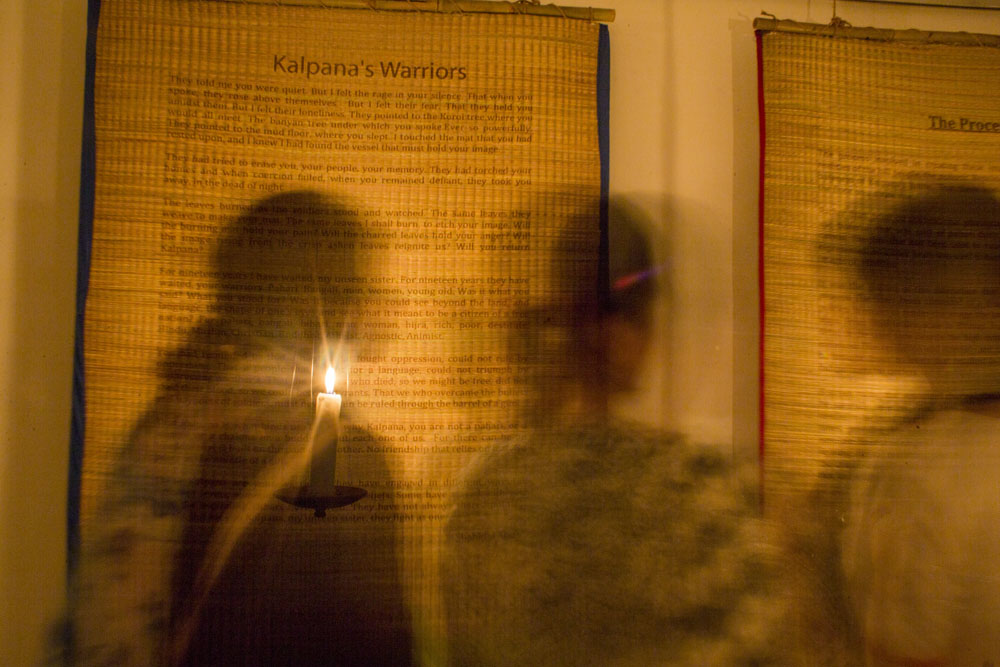
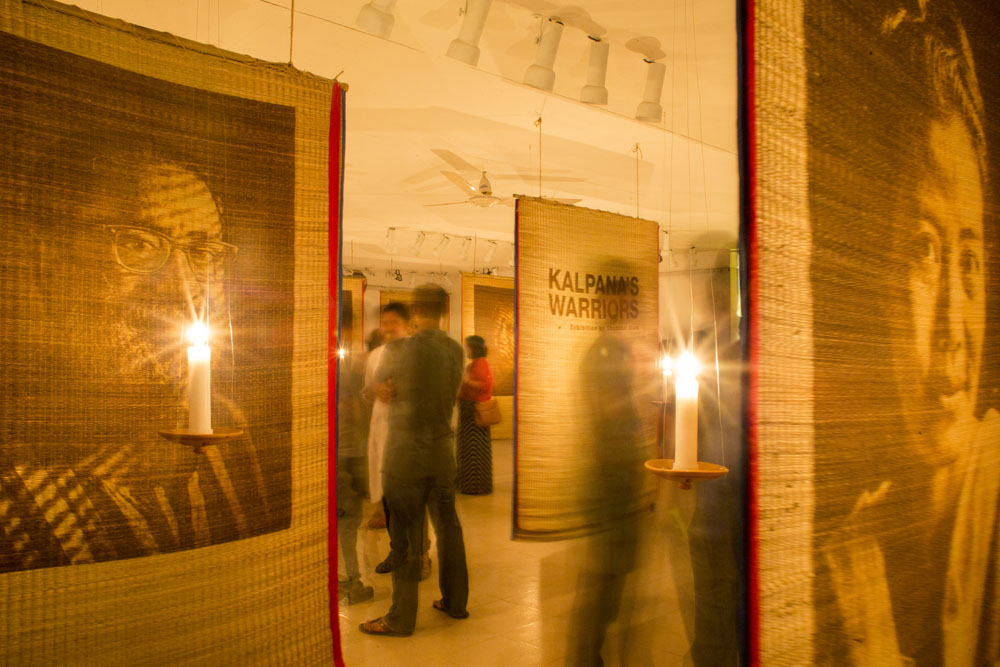
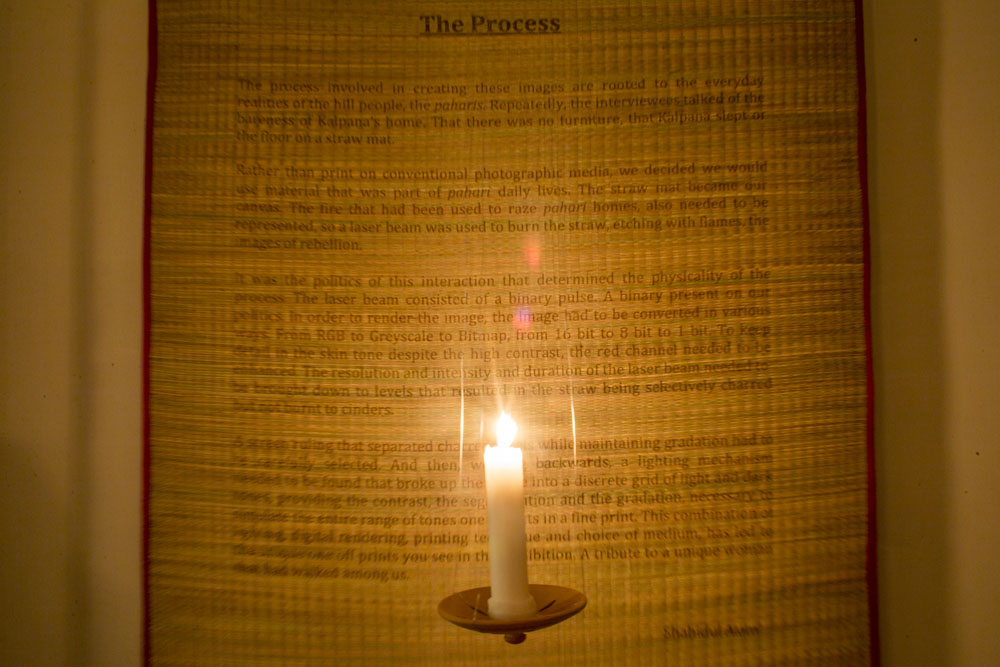
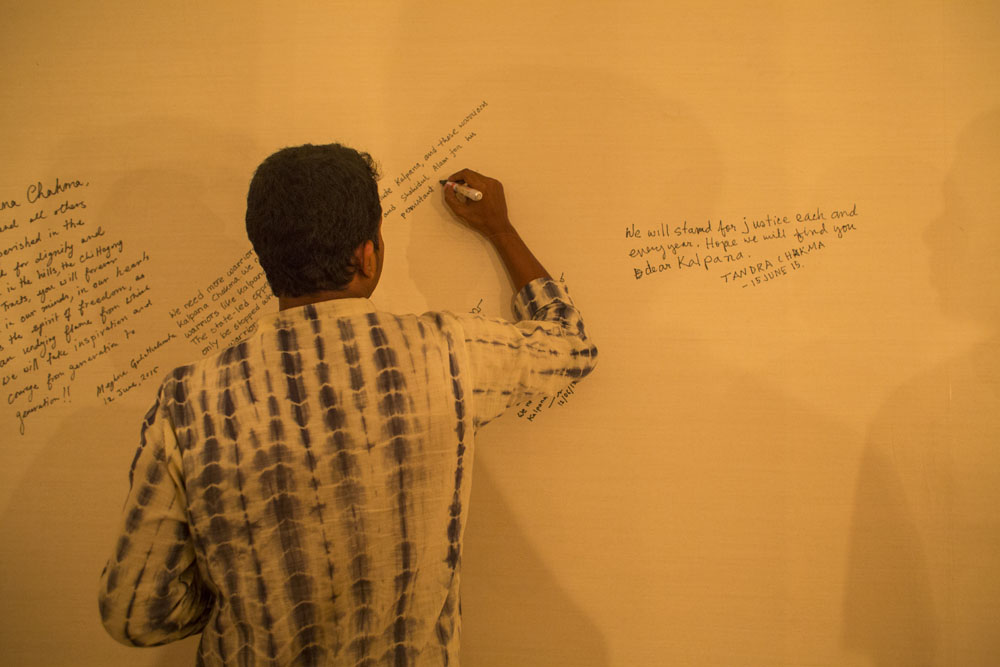
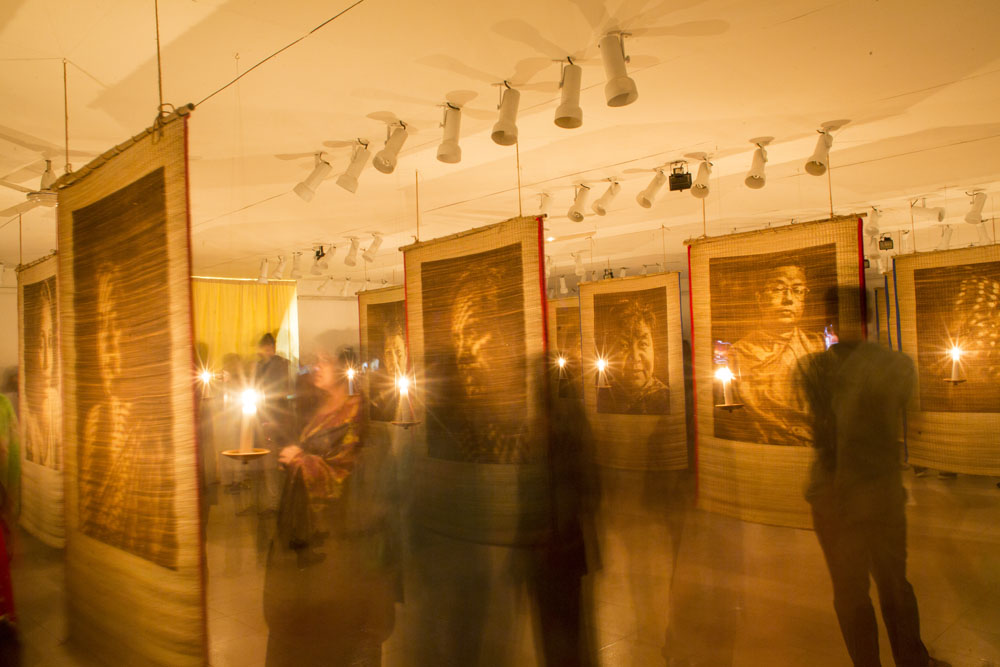
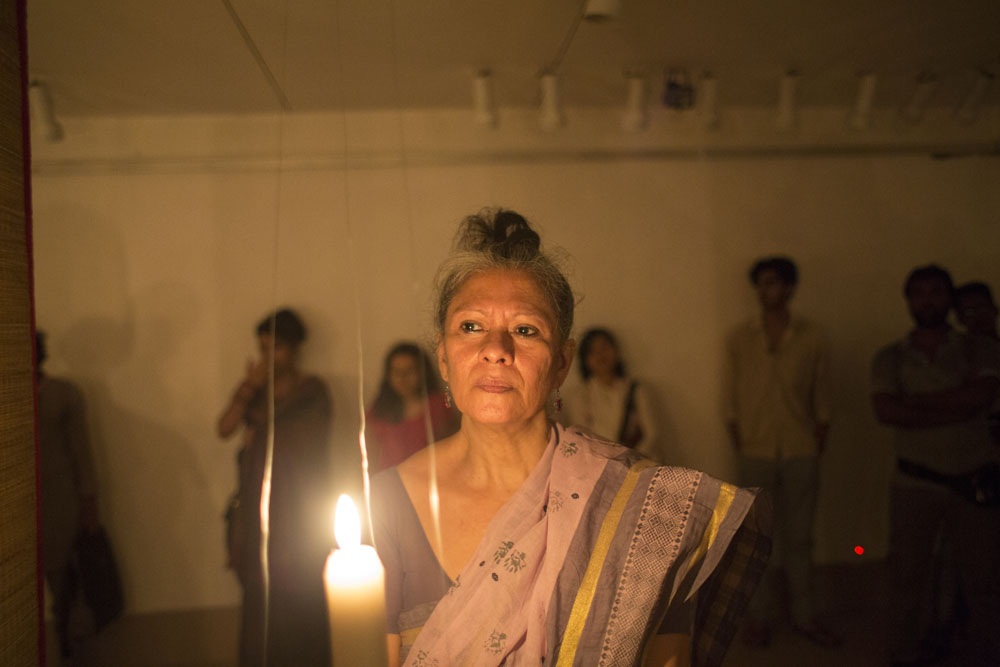
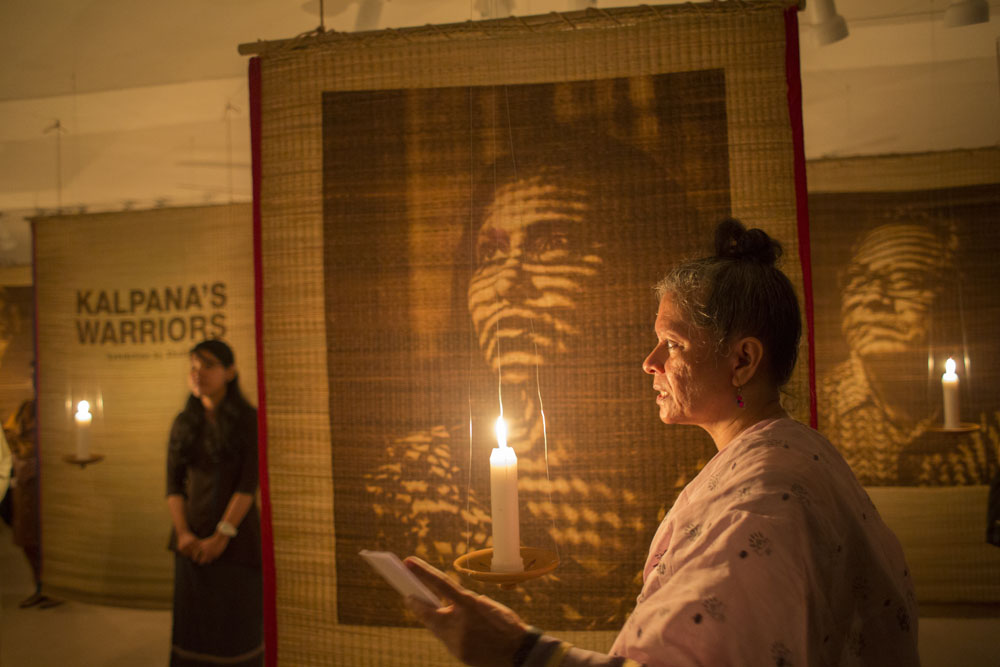
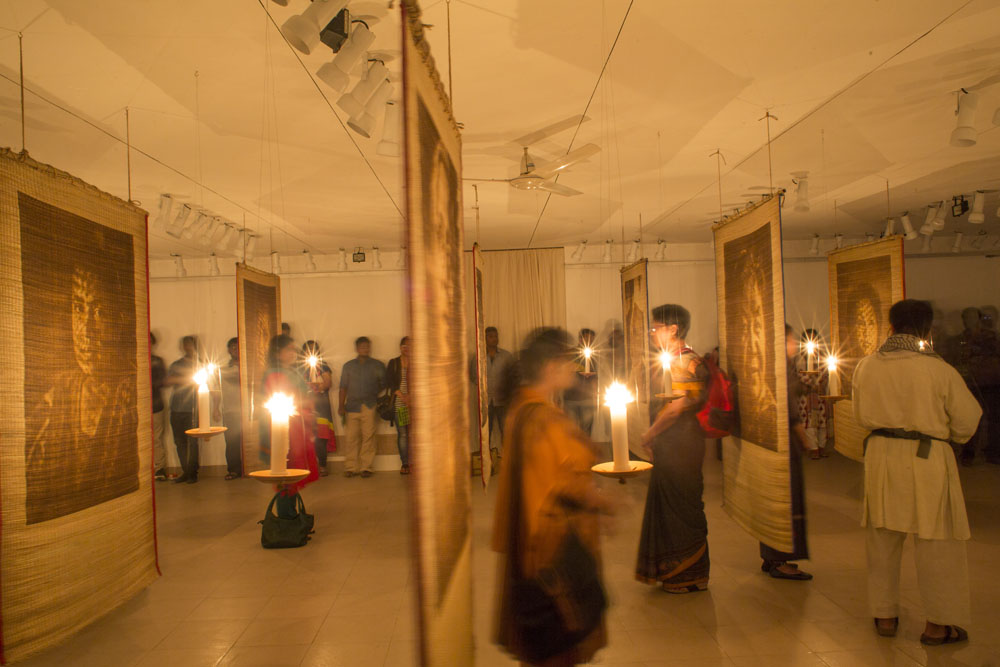
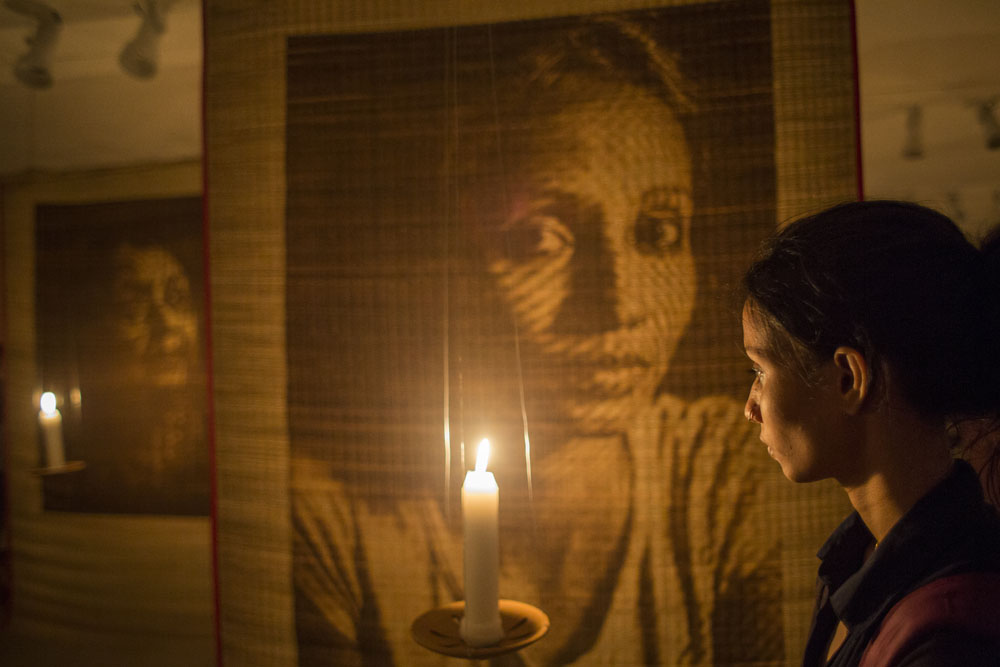
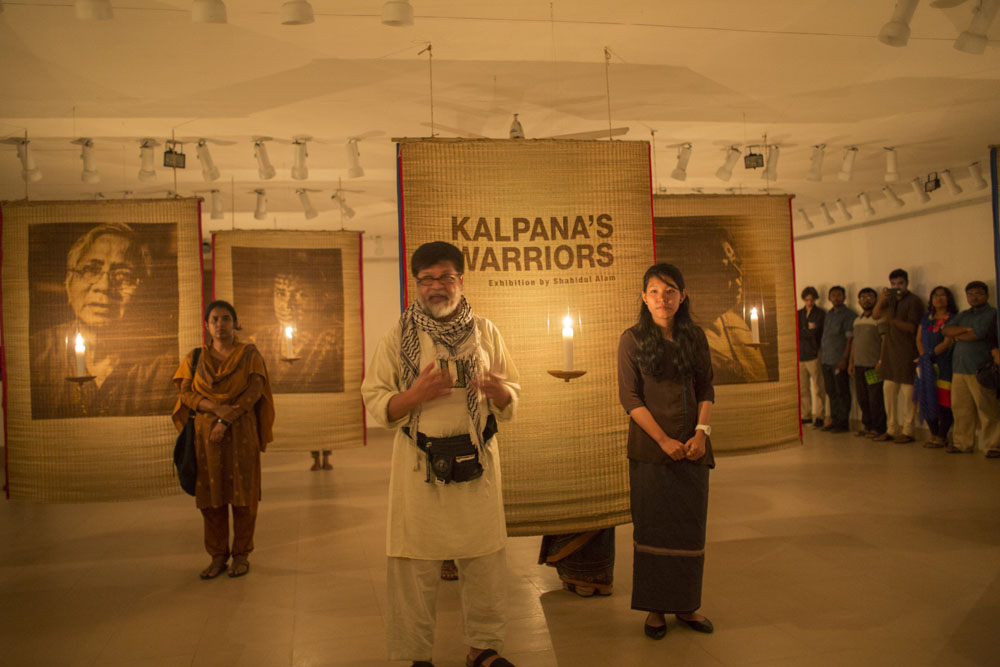
Kalpana's Warriors
Remarkable: Noam Chomsky
Absolutely stunning: Jess Worth. New Internationalist Magazine (Oxford)
They told me you were quiet. But I felt the rage in your silence. That when you spoke, they rose above themselves. But I felt their fear. That they held you amidst them. But I felt their loneliness. They pointed to the Koroi tree where you would all meet. The banyan tree under which you spoke. Ever so powerfully. They pointed to the mud floor, where you slept. I touched the mat that you had rested upon, and I knew I had found the vessel that must hold your image.
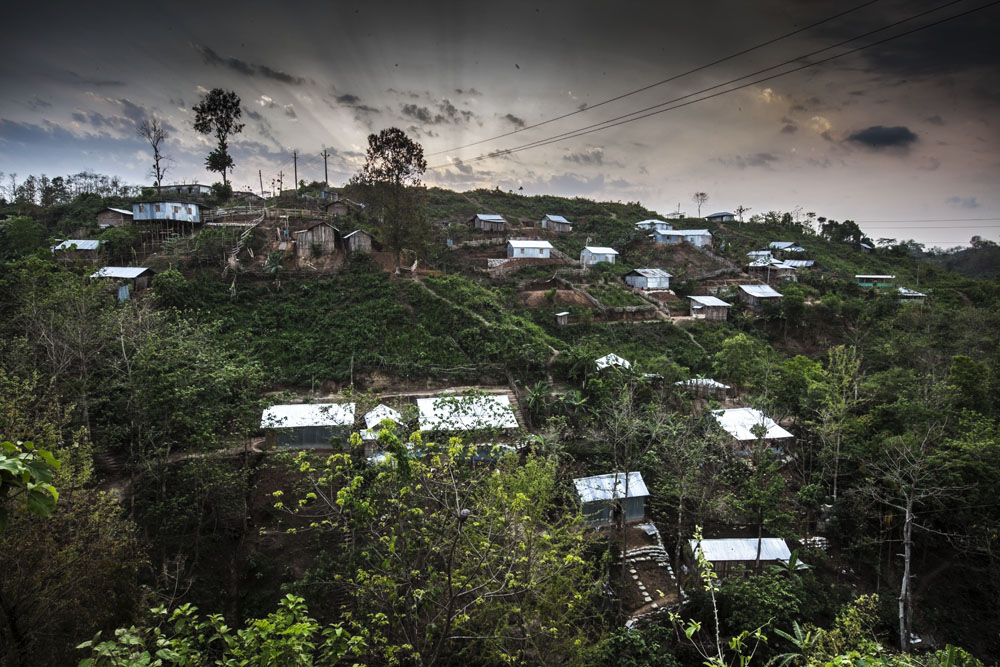
They had tried to erase you, your people, your memory. They had torched your homes and when coercion failed, when you remained defiant, they took you away, in the dead of night.

The leaves burned as the soldiers stood and watched. The same leaves they weave to make your mat. The same leaves I shall burn, to etch your image. Will the burning mat hold your pain? Will the charred leaves hold your anger? Will the image rising from the crisp ashen leaves reignite us? Will you return Kalpana?
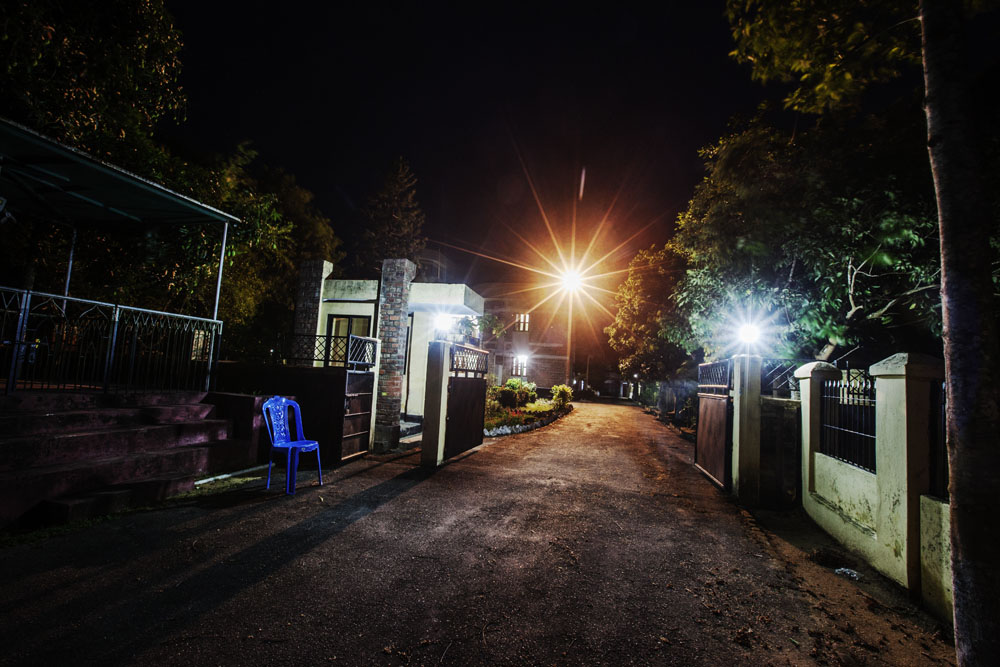
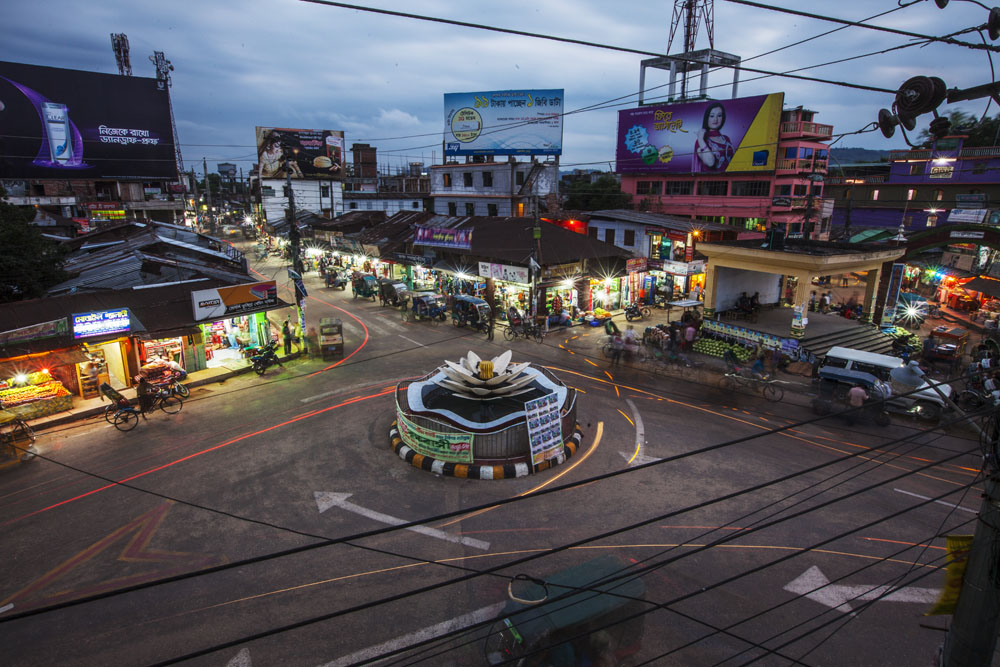
For nineteen years I have waited, my unseen sister. For nineteen years they have waited, your warriors. Pahari, Bangali, men, women, young old. Was it what you said? What you stood for? Was it because you could see beyond the land, and language, the shape of one?s eyes and see what it meant to be a citizen of a free nation? For pahari, bangali, bihari, man, woman, hijra, rich, poor, destitute, Hindu, Muslim, Christian, Buddhist, Atheist, Agnostic, Animist.
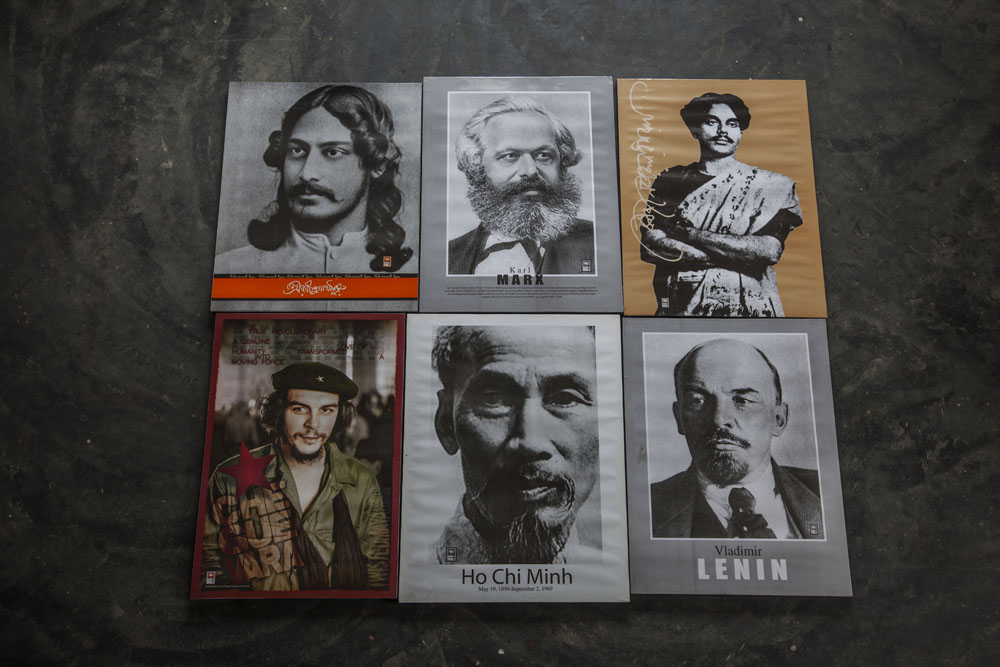
You had reminded us that a nation that fought oppression, could not rule by oppressing. That a people that fought for a language, could not triumph by suppressing another?s. That the martyrs who died, so we might be free, did not shed their blood, so we could become tyrants. That we who overcame the bullets and bayonets of soldiers, must never again be ruled through the barrel of a gun.
That Kalpana is what binds us. That is why Kalpana, you are not a pahari, or a woman or a chakma or a buddhist, but each one of us. For there can be no freedom that is built on the pain of the other. No friendship that relies on fear. No peace at the muzzle of a gun.
These Kalpana are your warriors. They have engaged in different ways, at different levels, sometimes with different beliefs. Some have stayed with you from the beginning. Others have drifted. They have not always shared political beliefs. But for you Kalpana, my unseen sister, they fight as one.
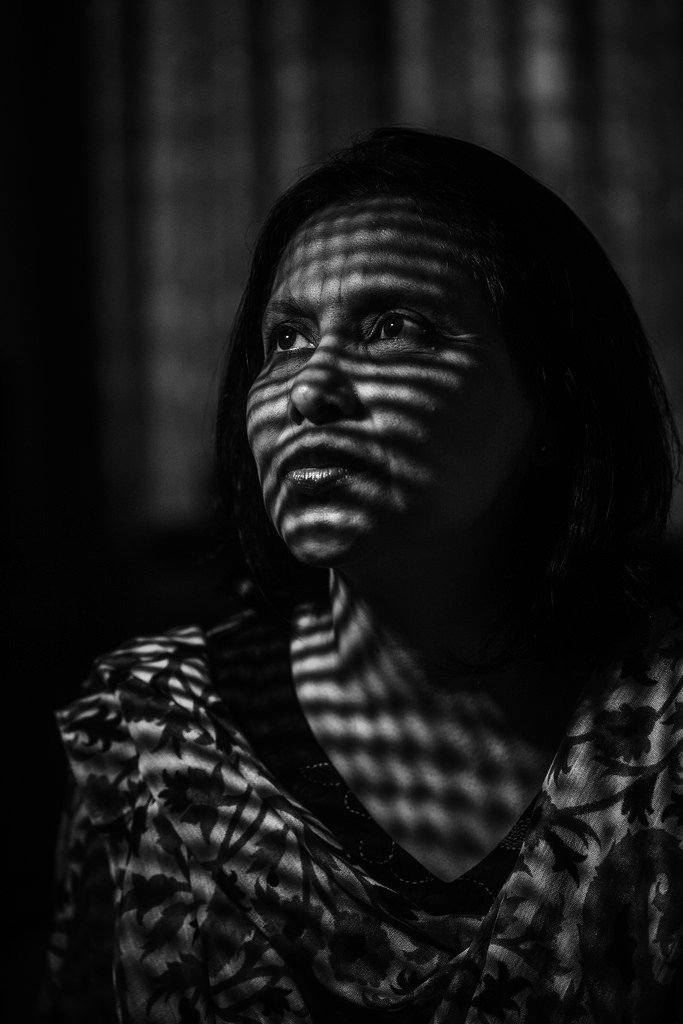
The Process
The process involved in creating these images are rooted to the everyday realities of the hill people, the paharis. Repeatedly, the interviewees talked of the bareness of Kalpana?s home. That there was no furniture, that Kalpana slept on the floor on a straw mat.
Sadia Marium making prints for my upcoming show on Kalpana Chakma #justiceforkalpana #eavig #CHT #military #bangladesh #rights #photography
A photo posted by Shahidul Alam (@shahidul001) on
Rather than print on conventional photographic media, we decided we would use material that was part of pahari daily lives. The straw mat became our canvas. The fire that had been used to raze pahari homes, also needed to be represented, so a laser beam was used to burn the straw, etching with flames, the images of rebellion.
It was the politics of this interaction that determined the physicality of the process. The laser beam consisted of a binary pulse. A binary present on our politics. In order to render the image, the image had to be converted in various ways. From RGB to Greyscale to Bitmap, from 16 bit to 8 bit to 1 bit. To keep detail in the skin tone despite the high contrast, the red channel needed to be enhanced. The Resolution and intensity and duration of the laser beam needed to be brought down to levels that resulted in the straw being selectively charred but not burnt to cinders.
A screen ruling that separated charred pixels while maintaining gradation had to be carefully selected. And then, working backwards, a lighting mechanism needed to be found that broke up the image into a discrete grid of light and dark tones, providing the contrast, the segmentation and the gradation, necessary to simulate the entire range of tones one expects in a fine print. This combination of lighting, digital rendering, printing technique and choice of medium, has led to the unique one off prints you see in this exhibition. A tribute to a unique woman that had walked among us.
Why the rise of fascism is again the issue
By John Pilger
johnpilger.com
26 February 2015

The recent 70th anniversary of the liberation of Auschwitz was a reminder of the great crime of fascism, whose Nazi iconography is embedded in our consciousness. Fascism is preserved as history, as flickering footage of goose-stepping blackshirts, their criminality terrible and clear. Yet in the same liberal societies, whose war-making elites urge us never to forget, the accelerating danger of a modern kind of fascism is suppressed; for it is their fascism. Continue reading “Why the rise of fascism is again the issue”
How many more Avijit's must we mourn?
Mourning Avijit Roy
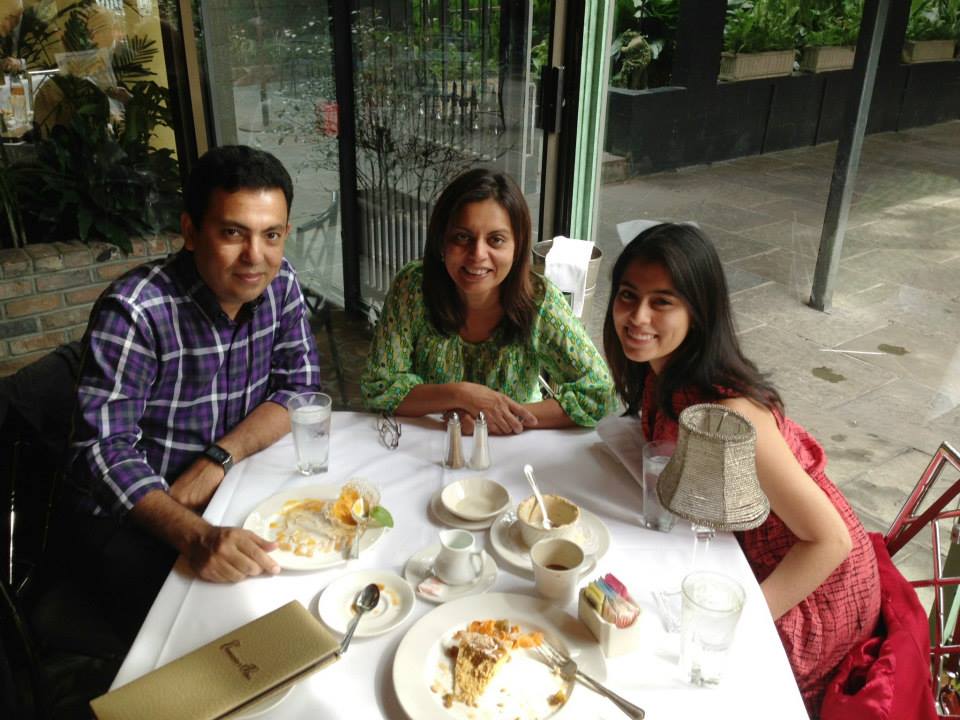
It was a few yards away from where Dr. Milon had been killed. Then it had been?suspected the police were involved. This time, the police were a silent witness. Blogger and human rights activist Dr. Avijit Roy and his wife?Rafida Ahmed Banna?were returning home after visiting the Amar Ekushey Book Fair. Their ricksha was stopped, they were dragged out and Avijit was hacked to death. Banya?was severely injured and lost a finger.? Continue reading “How many more Avijit's must we mourn?”
Pictures that question the world
By?Pawel Kuczynski
ArtFido
Good set, except that Israel is curiously missing.

Pawel Kuczynski?is a Polish artist who specialises in images that make you think hard about the world we live in.
Money, Mossad, and the CIA (1991)
The Inside Story of the U.S.-Israeli Covert Relationship
An amazing inside story which explains the ‘special relationship’ between Israel and USA
Government?s self-publicity with public money
by ?Taj Hashmi in The Daily Star

It is time to protest the ruling Awami League?s self-publicity through billboards at a staggering cost of more than Tk.3 crore (one senior minister would possibly say taxpayers? Tk.3 crore is ?rubbish? as he ?rubbished? the 4,000 crore stolen by Hall-Mark). I am really shocked and saddened by the government?s overwhelming ?billboard campaign? ? whose impact will be grossly under-whelming though ? and the deafening silence of our civil society, intellectuals, politicians and youths over this scandalous act of the ruling party. The removal of commercial billboards to the detriment of commercial firms by the government is also shockingly unwarranted.
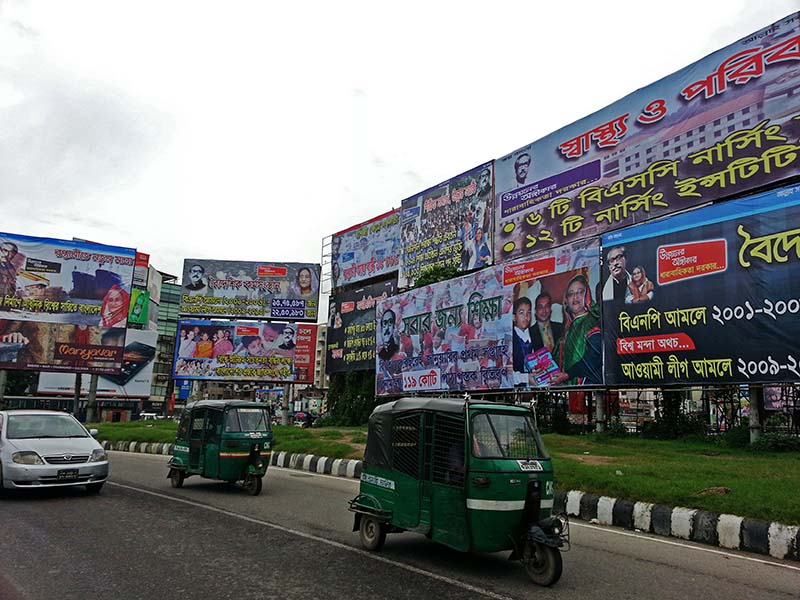
Continue reading “Government?s self-publicity with public money”

